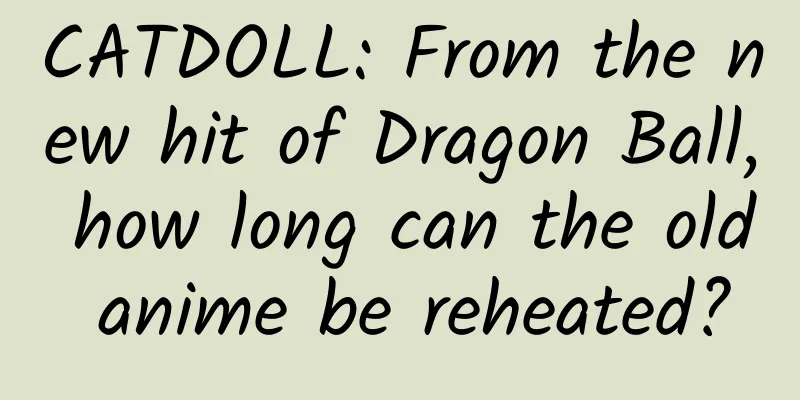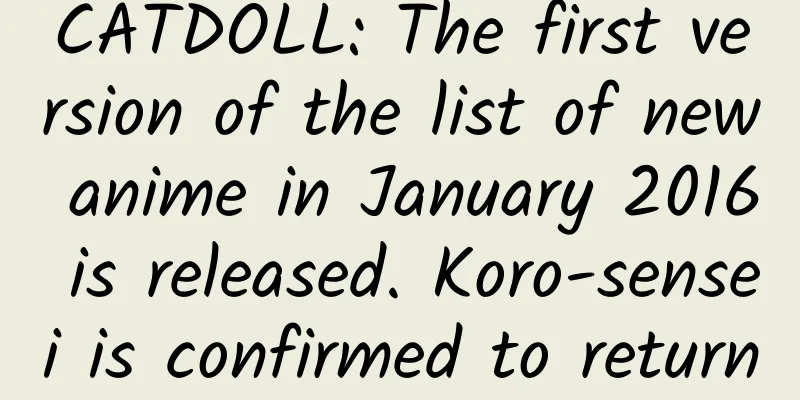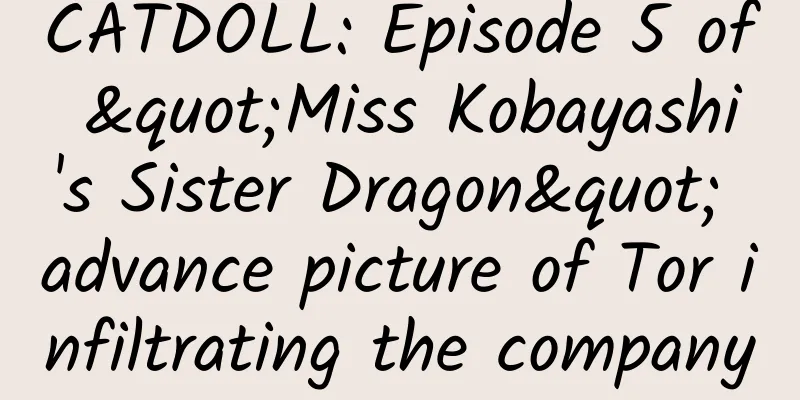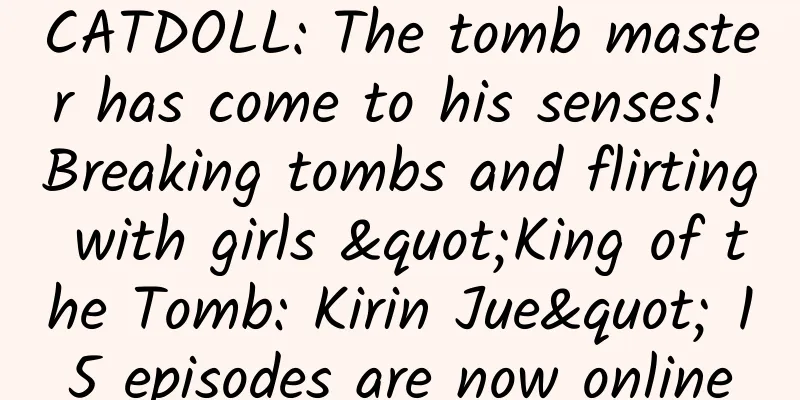CATDOLL: From the new hit of Dragon Ball, how long can the old anime be reheated?

|
For older audiences, works such as "Dragon Ball", "Saint Seiya" and "Digimon" are unforgettable memories of their childhood. Although they grow older and have more experience, whenever they recall the vivid characters and lively plots in these works, they always daydream in their minds, as if they were back to the scene when they were children sitting in front of the TV waiting to watch. In recent years, it seems that in order to cater to the audience's "childhood memories", many well-known classic works have been remade. Among them, there are works that only improve the image quality of old works and re-broadcast them, such as "Slam Dunk HD"; there are also works that improve the previous plots and expand the original number of episodes, such as "Ushio and Tora"; and more are the production of sequels or extra episodes of the original works, or the launch of new works by leveraging the influence of the original works, such as "Saint Seiya Soul of Gold" and "Digimon Adventure tri.".
As an audience, it must be a happy thing to see classic works from childhood being brought back to the screen and to see familiar characters and scenes again; however, many of these new adaptations of old works do not seem to be satisfactory, and the audience feels like they are just rehashing old stuff after watching them. Take the popular "Digimon Adventure tri." as an example. The first "Digimon" is undoubtedly a classic, and for this reason, many viewers are not satisfied with the subsequent works. Indeed, for the audience who have been impressed by the first part, it is difficult to have a good impression of the subsequent works again after being moved by the wonderful plot of the first part. In addition, the increasingly imaginative settings and slightly eye-catching plots of the subsequent works are also the reasons why the audience cannot accept them. If the reason why the audience no longer likes "Digimon" starting from the second part is "too many changes", then can "Digimon Adventure tri.", which is closely connected to the plot of the first part, with the main characters unchanged and appears again after several years, win the favor of the audience?
The situation does not seem optimistic. When the production of "Digimon Adventure tri." was just announced, the Internet was in an uproar. After all, it is a childhood memory, and it inherits the essence of the first part. It is believed that it will once again set off a strong wave of "nostalgia" after the broadcast; however, when the official announced the new character design and voice actors, the originally boiling netizens suddenly quieted down, and then started to curse - "Why is the style of the new work so weird!", "And even the voice actors have changed, what's going on!" Especially after the official postponed the release date one after another, the audience's dissatisfaction became more and more intense, thinking that the official "is just taking advantage of the popularity of the original work to 'reheat the old rice', and there is no sincerity at all." This dissatisfaction of the audience is not limited to "Digimon Adventure tri.". Some other works, such as "Sailor Moon Crystal" and "Saint Seiya Soul of Gold", have also been criticized by netizens for "character changes" and "plot flaws."
Topic Voting
Among the new series in July, the broadcast of Dragon Ball Super has become a new hot topic for discussion among the audience. As a classic work with passionate fighting and character creation, Dragon Ball Super has attracted widespread attention since its production was announced. However, after the first episode was broadcast on July 5, some viewers were still dissatisfied with the slow and dragging plot at the beginning, believing that it "tarnished the classic image of Dragon Ball".
Prior to this, Dragon Ball GT was also rejected by some viewers because of its forced patchwork of plots and messed up endings. In this work, all the scenes were focused on Goku, resulting in the neglect of the plots of other characters; at the same time, Gohan, who was loved by the original author Akira Toriyama, had a very bad image in Dragon Ball GT, which made many Gohan fans feel very dissatisfied; in addition, the perfunctory fighting scenes and the overly sad ending also made many viewers who like Dragon Ball unacceptable. Although Dragon Ball Super is now very popular, it has been criticized by the audience since the first episode. Can this hot momentum really be maintained? Is the audience's taste becoming more picky? Or is the official just using the original work to achieve commercial purposes? From my point of view, both reasons are true. First of all, for the audience, childhood memories are as inviolable as classics. Because the expectations are so high, there is a huge pressure to change and continue these classics. Even a small change can have a drastic effect on the audience. But after all, it is difficult to satisfy everyone. When creating, the production team must consider the audience's preference and the development of the times. Although the old-fashioned style can evoke the audience's childhood memories, for some new audiences, they are not interested in this retro style. Making animation requires not only "feelings", but also the actual commercial benefits it brings. If you only cater to old audiences, you will lose a lot of new audiences, which will be counterproductive for the production team. Secondly, for animation production teams, the trend of "reheating old works" has become more and more obvious in recent years. After many old works have been remade, the plots are rough, the characters are weak, and the collapse scenes are repeated just for the pursuit of maximum benefits. These are the obvious disadvantages of "old wine in new bottles". Nowadays, many anime works are mainstream with the "cute" route. In order to cater to the industry trend, many old works are also forced to be "cute", which makes them look neither fish nor fowl.
Sooner or later, the old stuff will be abandoned. How long can this kind of "reheating" heat last? It is still unknown. In fact, what the audience wants is just the feeling of being moved when the childhood works appear on the screen again. However, the production team forcibly pursues "novelty" and believes that "the audience is willing to watch this kind of 'new' works". Isn't it a feeling that the result is counterproductive? Topic Voting
|
<<: CATDOLL: The big touch is really scary! Japanese players use Lego bricks to build μ's members
Recommend
CATDOLL: Touhou Project is deeply involved in copyright scandal, and many of its games are involved in infringement issues
The popular Touhou Project series has always been...
CATDOLL: "Bleach" Chapter 682 Intelligence: Is Aizen going to start a war? Ichigo's sword is broken again
According to the advance information of the 682nd...
CATDOLL: Kato Emiri opens a fan club on October 1st!
As a leader among female voice actors, Kato Emiri...
CATDOLL: The release date of the animation "Strike the Blood" OVA has been confirmed, and fans complained about why there is no second season
Recently, the official announcement of Strike the...
CATDOLL: The latest PV of the third chapter of the movie "Digimon Adventure tri." is released and we will enter the world of Digimon again
Not long ago, we brought you the CM of the third ...
CATDOLL: A new epic work by the author of "Heaven's Lost Property" and "Rozen Maiden" is announced
The manga series of "Heaven's Lost Prope...
CATDOLL: "Girls und Panzer" will produce the final chapter animation! The school event is coming
The popular anime "Girls und Panzer" ha...
CATDOLL: "Brave Adventure" Season 2 Episode 6 Preview Picture Head-on Confrontation is Inevitable
The preview image of the sixth episode of the sec...
CATDOLL: The ratings of the animation "Dragon Ball: Super" plummeted, and netizens complained that it was too bad and had no plot
The animation "Dragon Ball: Super" crea...
CATDOLL: The latest PV of "JoJo's Bizarre Adventure: Diamond is Unbreakable" has a very cool style
The fourth season of the animation "JoJo'...
CATDOLL: "Detective Conan" TV animation episode 836: The Black Organization's new undercover "Scotch Whisky" makes its debut
In the upcoming episode 836 of the TV animation &...
CATDOLL: The comic "Living with Emperor Penguins" is now available on Shonen Jump+
"Living with Emperor Penguins" is a com...
CATDOLL: Disney sues Chinese animation "Cars" for copyright infringement
Everyone must remember that the domestic animated...
CATDOLL: The animation "What Should I Do If I'm Too Popular?" will premiere on October 6th, and additional voice actors will be revealed
The broadcast date of the new October anime "...
CATDOLL: "Tide and Tora" animation episode 24 preview: Tiger becomes a cute girl
The fierce battle of "Uo and Tora" has ...









